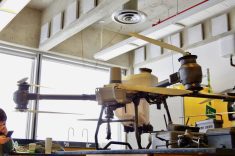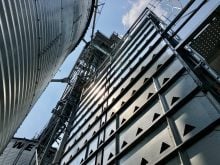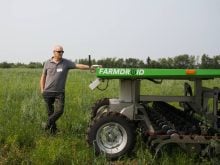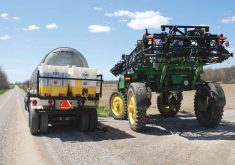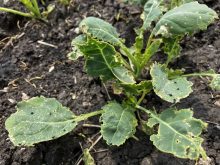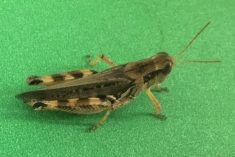Scouting for new technology to make farming more productive and profitable is a key part of Janay Meisser’s job as director of innovation for United Farmers of Alberta,
The Stratus AirSprayer, a drone tool unveiled by Saskatchewan-based Precision AI in July, is unlike anything she’s seen so far.
“I think they’ve got something really special,” said Meisser, who was invited to see the AirSprayer in action during field testing in New Mexico in May.
Read Also
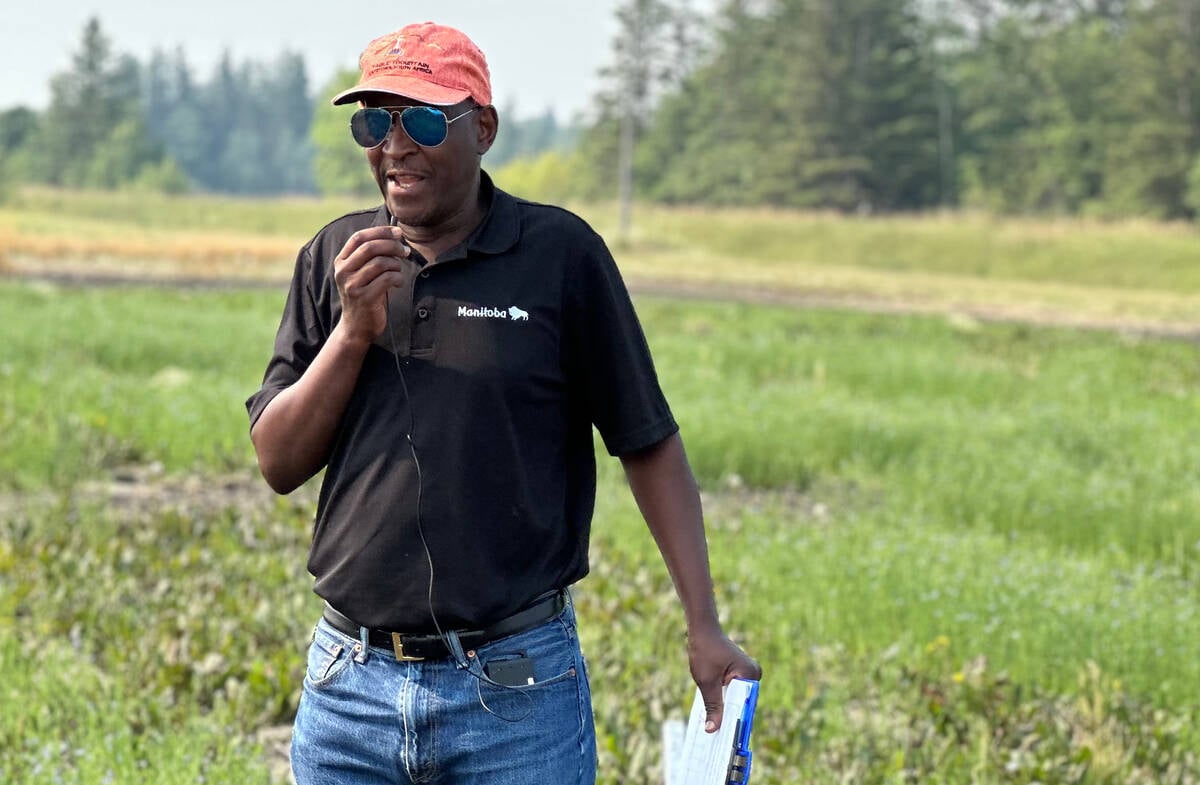
How much nitrogen can farmers really cut?
Manitoba fertilizer trials look for nitrification inhibitor sweet spot, to lower greenhouse gas emissions and cost without hurting yield.
“There are a lot of things that make the Stratus AirSprayer unique. I think it will change how the farming community starts to think about managing crops. It’s going to shift some mindsets.”
Why it matters: Farmers in Canada are frustrated with the slow pace of approval to get drones added to pesticide labels, even as drone technology races ahead.
The Stratus AirSprayer is different from the quadcopters and fixed-wing UAVs (unmanned aerial vehicles) typically associated with ag drones. It’s essentially a powered paraglider that can carry heavier loads and stay aloft longer than conventional drones.
Daniel McCann, founder and CEO of Precision AI, said the advanced, autonomous aerial sprayer was designed to increase efficiency and maximize field time in the large farms found in Western Canada.
“Spray drones are great if you have 40 acres of onions or something like that,” he said. “But if you’ve got 10,000 acres of canola, good luck getting a small drone sprayer to cover that.”
The body of the Stratus AirSprayer is 3.25 metres long, 2.1 metres wide and 2.25 metres high. It weighs 700 pounds empty. It has a three-blade propeller at the back, powered by a Rotax 100-horsepower gasoline engine. It relies on a 541-square-foot parachute, or “soft wing,” to stay aloft.
That parachute did give the Precision AI team pause. It is so different from conventional trends on spray technology that they worried how industry would react.
But McCann said the reception has been good once farmers see how the technology works. Handling the parachute isn’t any harder than folding and unfolding a spray boom, he added, and it’s easy to maintain.
“Except for the onboard AI system, everything can be fixed fairly easily.”
The Stratus AirSprayer can fly at just under 61 kilometres an hour and can take off on-site with 107-152 metres of runway. When a job’s done, the hardware can be loaded onto a flatbed truck or a 12-foot trailer and the canopy folded into a travel bag.
It can carry 100 U.S. gallons (378 litres) of herbicide, fungicide or insecticide solutions, which Precision AI said is almost 20 times more than smaller ag drones. GPS-guided broadcast sprays offer two interchangeable swath widths: 5.5 metres and nine metres.
The gas-powered machine can fly up to five hours before refueling, which McCann said is an obvious advantage over electric drones.
“Your typical spray drones, even the big ones, typically max out at about 10 minutes of airtime. Then you’ve got to swap batteries and refill it.”
The company puts the sprayer’s operation cost at less than $3 per acre, a fraction of traditional drone technology, which it estimates at $6 to $13 per acre.
Next gen
A second generation version, slated to be released soon after the first model, will feature green-on-green spray capability, developed by Precision AI with the use of artificial intelligence and advanced computer vision.
While the Stratus AirSprayer is designed to allow farmers to do large-scale aerial applications on their own, it isn’t meant to compete with crop dusters and other aerial spraying businesses, the company said. Precision AI views those applicators as potential partners as the UAV is unrolled in the Canadian market.
Regulations throw the brakes
A Canadian debut likely won’t happen soon because the federal government has not yet approved drone application for crop protection products.
Precision AI personnel are on a committee to advise Canada’s Pest Management Regulatory Agency on the necessary changes required to allow spraying from UAVs.
“At the end of the day, we’ve got the technology that can be used as an automated aerial sprayer. It’s built out, and we just need to wait for the regulatory environment to catch up,” said McCann.
The company hopes the PMRA will follow the lead of U.S. regulators, which allow drone spraying for products registered for aerial application. In the meantime, it plans to continue testing in the U.S. and on farms in Western Canada as it prepares for a limited release of the Stratus AirSprayer next year.
New horizons
Meisser views the AirSprayer as a good value proposition in terms of productivity and return on investment. She also sees it as a practical solution for farmers looking to get the most from their crops.
“The Precision AI team is really connected to the farming community and are trying to build solutions for farmers with farmers. I think that they’re solving problems that matter,” she said.
“I think they just got down to brass tacks to determine what does this (machine) really need to do.”
She believes it won’t take long for the Stratus AirSprayer to gain traction among farmers once it catches on with leading-edge ag adopters and influencers.
“You just need some strong ambassadors to showcase the technology. Farmers are the most innovative people I know. They solve problems on a daily basis, and it doesn’t take any of them too long to identify where they see value. I think they will embrace it.”



